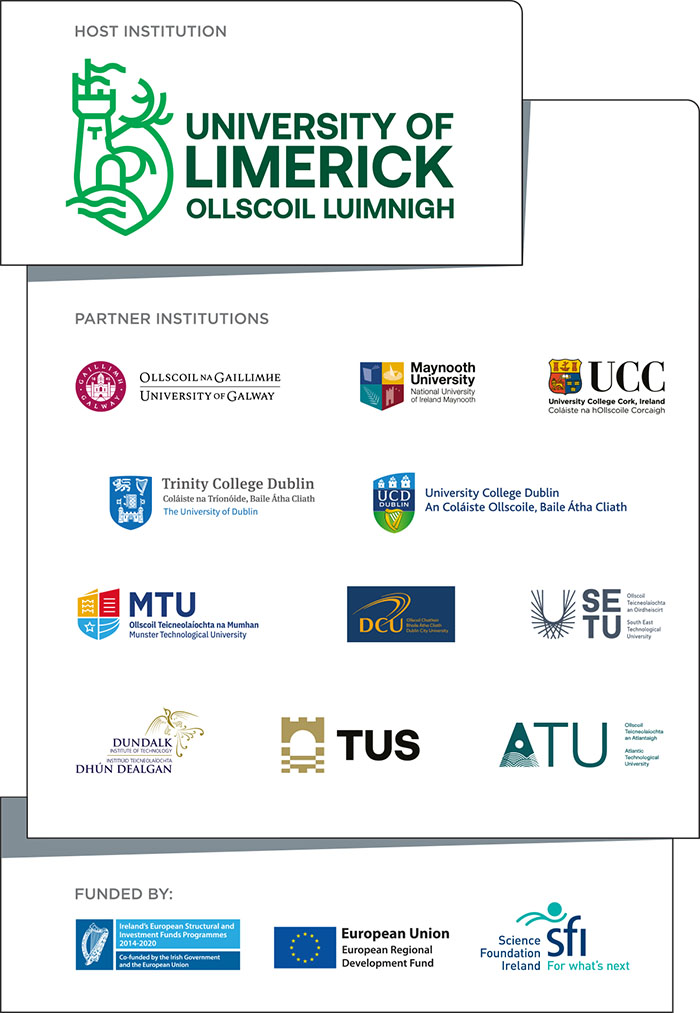History of Lero
You are here
Lero’s origins can be traced back to the mid 1980s when a group of researchers in Trinity College Dublin secured Ireland’s first software engineering research grant from the EU’s newly established ‘Esprit’ programme. The project ‘ToolUse’ (No. 510) spun off a specialist software tools company ‘Generics’ which attracted interest from major software corporations. In 1990 Hans Juergen Kugler, Kevin Ryan and other lecturers in TCD, who had been involved in ToolUse led a bid for the proposed ‘European Software Institute’ but they lost out when the Basque country in Spain offered substantial funding which was not forthcoming from the Irish government. Shortly afterwards Kevin Ryan moved to the University of Limerick and Hans Juergen Kugler became deputy head of the ESI in Bilbao. Independently, at the newly recognised University of Limerick, Tony Cahill was also using EU funding to build up a software engineering research group. This work led to the founding of the Piercom spin-off in 1994. Enterprise Ireland supported the establishment of Piercom and of Multimedia Technologies Ireland, an applied research centre based in UL and TCD.
The major change came with the emergence, following a government Foresight exercise, of Science Foundation Ireland in 1999. At long last there was a major, long-term commitment to scientific research in Ireland. SFI’s first aim was to attract world leading researchers to Ireland. In a very significant move the eminent software engineering researcher David L Parnas came to UL in 2002 with SFI funding for 5 years. In the same year Brian Fitzgerald joined UL to take up an industrially funded chair. UL’s then College of Informatics and Electonics had its own strategic review, by Peter Freeman and John O’Reilly, which advocated research with stronger focus and larger groups, messages which proved prescient when SFI launched a call for Centres for Science, Engineering and Technology – CSETs. These centres were required to have both university-industry and university-university links. With proactive support from the Industrial Development Authority, software researchers in four universities, led by UL, fashioned a proposal for CSET funding. Eventually this led to an award, in 2005, of €11m for the establishment of Ireland’s Software Engineering Research Centre – now known as Lero – with Hans Juergen Kugler as Industrial Director, Klaus Pohl as Scientific Director and Kevin Ryan as Centre Director. Subsequently, funding was secured from the Higher Education Authority to constuct a building to house Lero at UL (PRTLI), from SFI (in 2011 and 2014) and from numerous industrial partners in Ireland and abroad.
Where did the name ‘Lero’ come from? Even before the first CSET funding was awarded SFI organised seminars on how such centres should be structured and operated. At one of these Kevin Ryan heard the director of an eminent Californian centre repeatedly stress the importance of ‘branding’. “Once your name and identity are set you are stuck with them. If you choose badly you will always struggle for recognition.” Once the funding was secured Kevin Ryan and Hans Juergen Kugler contracted a Dublin-based branding company to come up with a suitable name and logo. After some mind-boggling (for the hard-headed scientists) sessions and no useful outcome it was decided that if nothing emerged at the next session (séance?) we would cut our losses and stick with our acronym. When presented with the name ‘lero’ – all lower case – all three of the customers agreed it was a runner. The caligraphy ‘link’ followed and the name and identity were quickly adopted by all the locations that were involved in the CSET. It could be argued that this was the best investment ever since the name ‘lero’ is now internationally recognised as linking Ireland with high-qualty software research. In 2014, for copyright registration reasons, we changed the lower case “lero” to “Lero”.




